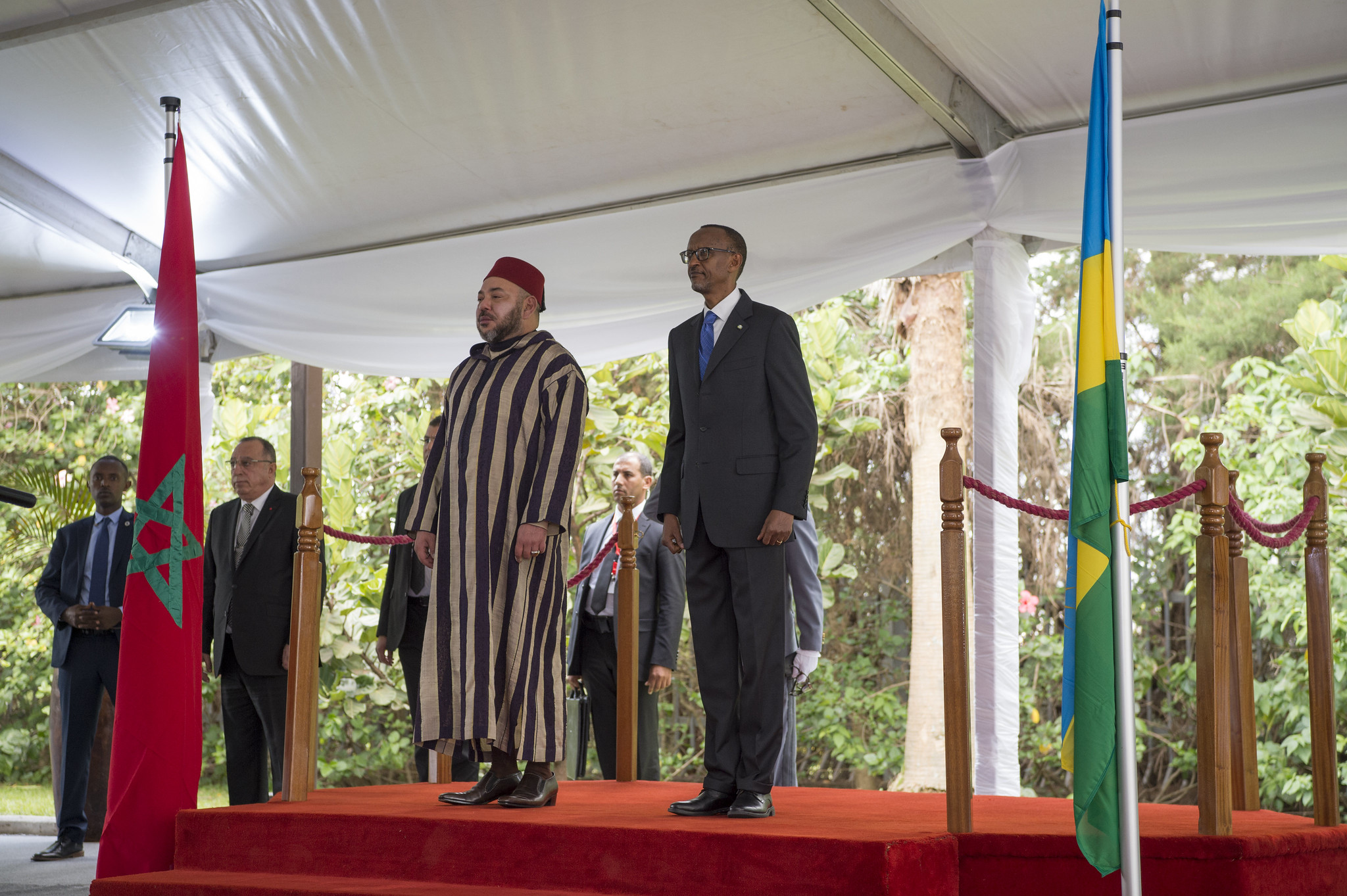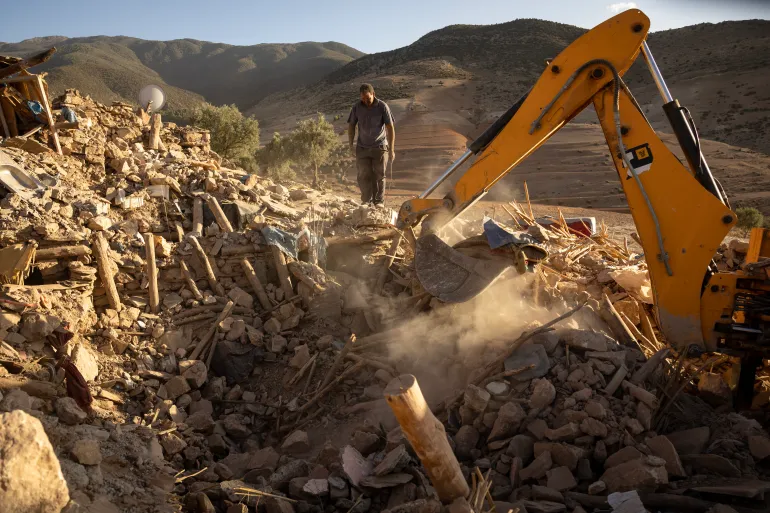
In this photo dated October 18, 2016, President Kagame welcomes King Mohammed IV of Morocco to Rwanda, at Urugwiro Village./File Photo.
President Paul Kagame has expressed his deepest sympathies and condolences with Morocco following a deadly earthquake that hit the country, in the remote High Atlas mountain region on Friday night, killing at least 2,012 people, 2,059 injured and leaving many homeless.
The Head of State joined other world leaders to commiserate with the North African country which is still reeling with the aftershocks of the 6.8 magnitude which flattened villages and towns in the provinces of Al-Haouz and Taroudant, which were the epicentre and damaged historic buildings in Marrakesh – the nearest city to the affected region.
“On behalf of all Rwandans, I express our deepest sympathy and solidarity with King Mohammed VI, the families of the victims and the people of Morocco in this moment of profound tragedy. Rwanda stands with Morocco in this difficult time,” President Kagame posted on X, formerly known as Twitter.
Rwanda and Morocco maintain strong bilateral and diplomatic cooperation for decades. King Mohammed VI, visited Rwanda in October 2016 where he held talks with President Kagame and the two leaders witnessed the signing of Bilateral Agreements in the Economic, Political and Social sectors.
The Moroccan King visited Rwanda three months after President Kagame had paid a two-day state visit to Morocco on invitation of King Mohammed VI, who decorated him with the Grand Collar of Wissam Al-Mohammadi, Morocco’s highest national Award of Honour.
Race to find survivors
Rescuers led by Moroccan armed forces are working around the clock to find survivors under the rubble of collapsed houses, in difficult conditions, with the death toll expected to rise.
King Mohammed VI has ordered the armed forces to mobilise specialised search and rescue teams and a surgical field hospital, according to a statement from the military.

A bulldozer digs through rubble as search and rescue efforts continue in the earthquake-hit region.
The quake that struck in Morocco’s High Atlas mountains late on Friday night damaged historic buildings in Marrakesh – the nearest city to the epicentre – while most of the fatalities were reported in mountainous areas to the south in the Al-Haouz and Taroudant provinces.
In the mountain village of Tafeghaghte near the quake’s epicentre, virtually no buildings were left standing. The traditional clay bricks used by the region’s Berber inhabitants proved no match for the rare quake.
The epicentre of the earthquake was at a depth of 18.5km (11.5 miles) and occurred about 72km (44 miles) northeast of Marrakesh, the United States Geological Survey (USGS) said. It is Morocco’s deadliest earthquake since 1960 when a quake was estimated to have killed at least 12,000 people.

